Iceland: How much things cost & how to visit on a low budget
Since its currency crash in 2008, Iceland had gone from absurdly expensive to somewhat reasonable in cost, and that has prompted thousands of new tourists to stream in to see what all the fuss is about. It’s hard to find a visitor to Iceland who didn’t absolutely love the place, but you won’t find anyone who tells you it’s cheap, so planning ahead is essential. Prices have continued to creep up in 2015 and 2016, so it’s again among the most expensive European destinations.
Many visitors arrive on an Iceland stopover going between North America and Europe, but with very cheap flights to and from Europe it’s becoming popular for adventurous types from all over the continent. In 2013 I spent 9 days in the country, always checking for prices and the cheapest ways of doing things, so below I can lay out how to budget and what to do to keep costs down.
Note: This article was first written in late 2013, but all prices have been updated as of December 2016 to be current through 2017.
Reykjavik vs. the rest of Iceland: Where to go

If you have one night or a few nights you are better off taking a bus or renting a car directly from the airport and heading east along the southern coast for some of the country’s best sights. If you have at least a week you’ll want to rent a car and do a lap around Iceland’s famous Ring Road, allowing you to see nearly everything the country has to offer in a neat and organized way.
Iceland accommodation: Hostels, guesthouses, and hotels
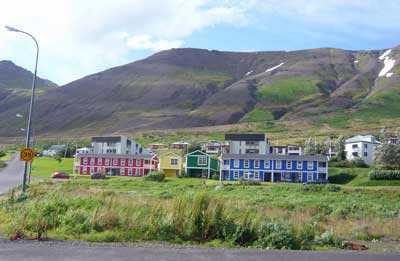
The most common form of accommodation in Iceland is a guesthouse and hostel combination which will have a mix of private rooms and dorm rooms, with shared bathrooms in down the hall. Most of them have fully equipped shared kitchens, so self-catering is at least as popular as eating out while exploring Iceland outside of Reykjavik.
High season (June through August) typical accommodation prices
All prices quoted in US dollars at a rate of about 110 Krona to US$1 in December, 2016.
- Hostel dorm bed: US$34 to US$58
- Single private with shared bathroom: US$85 to US$135
- Double private with shared bathroom: US$118 to US$140
- Double private with en-suite: US$130 to US$320 (and up)
Prices in Reykjavik are a bit higher than elsewhere in the country, but not by much. Prices in the off season are about 30% lower than in high season, but in the slowest months many places close so rates never go much lower than this.
Most Iceland guesthouses are NOT on the normal hotel-booking sites
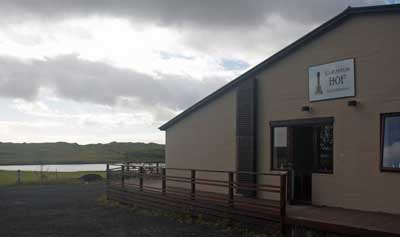
The good news is that when you get to Iceland, the tourism office will give you a directory of almost every guesthouse on the island, and there are other ways of finding these guesthouses and other informal accommodations. Even as of late 2016 you should be able to book a double room (with shared bathroom) for about US$120 per night in most towns in Iceland. If you do a hotel search you might see prices that are double that, but those are in the few formal hotels with 24-hour lobbies and such.
Increasingly, Airbnb and other online rental sites are the best place to find guesthouse accommodation in Iceland. As of only a few years ago, most places would be booked by phone or in person on arrival day, but now more and more places can be pre-booked, at reasonable prices.
Sleeping bag accommodation in Iceland

In a ‘sleeping bag accommodation’ (as it’s known in Iceland) you’ll get a bed with a mattress and often a pillow. So with even a cheap indoor sleeping bag, you’ll be comfortable and warm while saving quite a bit of money. For those renting cars, this is a highly recommended strategy.
You can rent sleeping bags in Reykjavik starting at around €12 per week.
Most Iceland attractions are free (the good news)
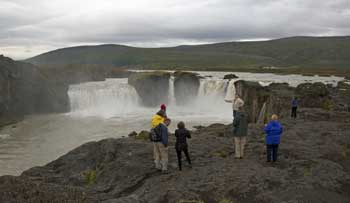
So to see all the glaciers and waterfalls and volcanic beds and other scenic attractions, it’s all free of charge with no admission cost or even parking fees. The larger attractions also have visitor centers where you can get local advice for free as well.
Iceland transportation: Rental cars and buses
Even as a lifetime public transportation fan, I’m very glad I gave in and rented a car to tour Iceland, even as a solo traveler. For the most part the roads are in perfect condition and virtually empty even in high season, so driving couldn’t be easier. Also, the country has stunning vistas every time you turn a corner, so being able to stop in the middle of the road even if there is no room to pullover, is critical.
The buses are modern but also expensive and running on very limited schedules. If you only have enough time to cover the main sights along the southern coast you might buy one of the bus passports that allows you to hop on and hop off, though a rental car is still much better and easier.
Rental cars in Iceland: What you need to know
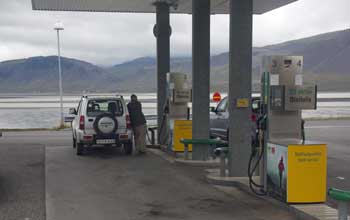
For an extra fee you can pay to reduce that deductible to almost nothing, but the more popular add-on is the Gravel and Glass insurance. For around €10 per day with this coverage you have a zero deductible if the vehicle gets damaged by gravel or if any glass gets broken by flying rocks (or anything else). Unfortunately, many of Iceland’s side roads and even a few of the main roads are covered in gravel, and if you drive at anything above a crawl, there will be some gravel flying around.
Personally, I normally decline add-ons like this but in this case I bought the Gravel coverage after reading a few horror stories in online reviews. I didn’t get any damage that I’m aware of, but the peace of mind was worth a LOT when driving on isolated gravel roads so I wasn’t petrified that I was chewing up the paint job just trying to stay safe on the roads.
Rental cars in Iceland
- 2-wheel drive compact (manual): US$230 per week and up plus add-ons
- 2-wheel drive compact (automatic): US$270 per week and up plus add-ons
- 2-wheel drive mid-size: US$450 per week and up plus add-ons
- 4-wheel drive van or SUV (automatic): US$650 per week and up plus add-ons
Daily rates are about 20% as much as weekly rates, so 5, 6, or 7 days cost the same.
Add-ons
Gravel coverage: US$10/day
GPS (highly recommended): US$10/day
Additional collision waiver: US$10/day
Fuel prices in Iceland
Every gas station in the country has the same prices, which don’t seem to change much. As of December 2016, a liter of petrol is 194 Krona, which is about US$1.75 or €1.63, or about US$7.50 per gallon.
Bus pass prices in Iceland
For a quick day trip from the airport to some local sights you can spend as little as US$90 per person, but for the longer distance buses you’ll spend at least US$130 to US$250 depending on length of time in order to hop on and hop off.
A Ring Road passport will cost around US$400 per person, so for two people it’s no cheaper than renting a car, even after fuel is taken into account, and for 3 or 4 people it’s definitely cheaper renting a car.
Food prices in Iceland
Here’s the thing: sit-down restaurants in Iceland are very expensive by international standards, so there aren’t very many of them. Obviously Reykjavik has many restaurant choices but most smaller towns might have only a few at most. The good news for budget travelers is that fast-food options are more plentiful, and self-catering is even cheaper and easier.
Restaurant prices in Iceland
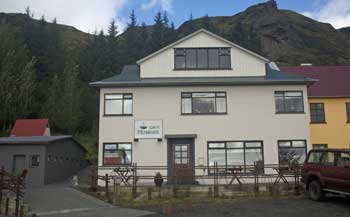
A soft drink, coffee, tea, or even bottled water will generally be between US$3 and US$5 in a restaurant. A pint of beer will typically start at around US$7 at even the cheapest places, while wine and spirits cost even more.
Fast food prices in Iceland
In Reykjavik and larger towns (which might only have 2,000 residents) you’ll have many fast food options including Subway, Quiznos, and usually a few local burger or hot dog places. Prices for a sandwich at Subway are about US$6 for a 6-inch and US$10 for a foot-long, so they aren’t too much higher than elsewhere in Europe, and are sure cheaper than proper restaurants.
More good news for drivers is that many gas stations around the country have fast food restaurants built in, so it’s fast and easy to pick up a sandwich or hot dog by the side of the road.
Hotel breakfast prices in Iceland
Many hotels and guesthouses in Iceland serve breakfast, but it’s almost always at an extra fee, and many don’t serve anything at all. If a breakfast is offered it will typically cost between US$12 and US$15 for a buffet of cereals, bread, cold cuts, cheeses, hard boiled eggs, juices, coffee and tea, and perhaps some pastries.
Making your own self-catering breakfast will be cheaper, but since you can stuff yourself for a flat fee at the breakfast buffets it might be worth it to save yourself the hassle of shopping the day before and making breakfast in the morning.
Self-catering in Iceland
The best budget tip for Iceland is to buy and prepare your own food, and you can literally do it for all three meals per day if you prefer. Since Iceland has almost no national “must-try” dishes, you can buy and prepare your own food without worry about missing anything meaningful.
Nearly every guesthouse in Iceland has a shared kitchen where at least half the guests will be storing and preparing breakfasts and even dinners. They have refrigerators, coffee makers, electric kettles, pots, pans, dishes, and silverware, as well as salt and other spices, so you can buy just the food and you’ll be able to prepare it all.
Supermarket prices in Iceland
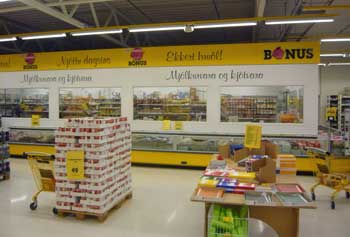
For example, you can buy a 400 gram (1 pound) block of Havarti cheese for around US$5, but a similar looking cheese right next to it on the shelf might be US$15 for the same amount. The same is true for lunch meats. Sliced ham can be US$3 for enough to make 2 sandwiches, but sliced roast beef might be US$10 for the same amount.
Some sample prices in the cheaper Iceland supermarkets
- Sliced white bread: US$1.70 per large loaf
- Fresh baguette: US$1.50 to US$2 each
- Hot dog buns: US$2.50 for 5
- Pork hot dogs: US$3.50 for 5 large hot dogs
- Cheap Havarti or other local cheese: US$5 for 400 grams (1 pound)
- Imported cheese: US$10 to 15 for 400 grams (1 pound)
- Sliced ham for sandwiches: US$5 for 400 grams (1 pound)
- Sliced roast beef for sandwiches: US$12 for 400 grams (1 pound)
- Pasta: US$1.50 for .5 kilogram (1.1 pounds)
- Pasta sauce: US$3 for a .5 liter jar
- Ground beef: US$5 for .25 kilos (half pound)
- Bake-at-home pizza: US$5 to US$7 for one person
- Bag of tortilla chips for 2 or 3 people: US$2
- Jar of salsa for those chips: US$3
- Breakfast cereal: US$3 to US$5 per box
The prices above are for many of the cheaper and more common things that budget tourists buy in Iceland. As mentioned above, if you want something exotic and imported, it might cost double or triple what you pay at home, if you can find it at all.
Alcohol prices in Iceland
In restaurants and bars throughout the country you’ll pay at least US$8 for a pint of beer, and at least US$10 for a glass of wine or a simple cocktail. If it’s a fancy place you’ll pay even more, of course.
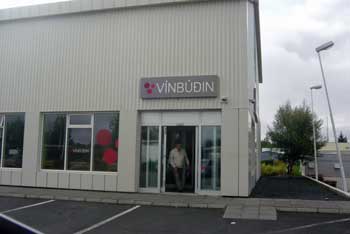
Here are some typical prices for alcohol:
- 330ml can of local beer: US$2 to US$3
- 500ml can of local beer: US$2.50 to US$4
- Cheapest bottle of wine: US$10 to US$12
- .7L bottle of off-brand vodka: US$30
- .7L bottle of mid-level brand vodka: US$50
Bottom line on doing Iceland as cheaply as possible
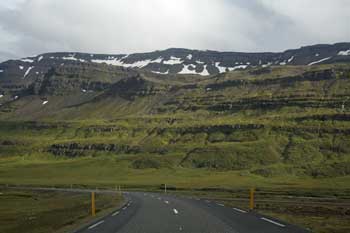
Whether you are going to get dorm beds or private rooms, as long as you will have your own wheels it’s worth renting a sleeping bag. You get the same bed and same services for about US$10 less per night, which will pay for a week’s rental of an indoor sleeping bag.
Unless you are a terrible driver or afraid to drive, it’s highly recommended to rent a car instead of trying to get around using buses. Once you get there you’ll see that having 100% flexibility with a car compared to almost no flexibility with a bus, is worth a LOT.
Instead of trying to be cheap with transportation, be cheap with self catering food and drinks for yourself. If you have at least a small group of people you’ll be able to have a party each evening in or near the shared kitchen of your guesthouse, and it will be more lively than any restaurant in town.

Hi Roger I have wanted to visit Iceland for a few years now. what was the cost for the SIM card there and do I need to do anything else regarding my phone for usage there. It seems like phone flexibility is essential. Also For the sleeping bag rooms that is just a term… correct? if I packed sheets and a blanket instead of renting that would be fine wouldn’t it. Hoping to go with my family (4 of us) would we be able to book double rooms anywhere? Also my oldest son is vegan so would gas station restaurants have food that he could eat? thanks for you help!
Layne,
I don’t remember how much the SIM card cost for my phone, but it was something around US$20 or maybe a bit more. I took a bus to a shopping mall just a bit outside of the city center to go to a phone store, though I assume there are places I could have gone closer to the main street in Reykjavik. I think I just had to show my passport and pay for the card, and the person at the store did everything needed to establish service before I even left. And yes, I’d definitely get a SIM card again if I was doing the Ring Road or spending much time outside of Reykjavik. The data worked pretty much everywhere I tried it all around the island (I stuck fairly close to the Ring Road – I doubt there is much service in the center of the island), and the phone service worked every time I tried it as well. Having a phone is a key if you want to book guesthouses as you go.
Weird as it may sound, those places are officially called “Sleeping Bag Accommodation,” when they offer rooms with no linen or blankets. Most places seem to give you a discount of about US$10/night per person with no linen, but actually in 3 or 4 places that I stayed they didn’t offer that as an option. So I think I used my sleeping bag 3 or maybe 4 of the 7 nights I was on the road. I was happy to have a sleeping bag because nights are always cold in Iceland and I wasn’t sure how much heat those guesthouses would have. But it turned out that all of them were pretty well heated, so I probably would have been fine with a sheet and a thin comforter. I assume that you’d be okay bringing your own sheets and blankets instead of an actual sleeping bag. The whole idea there is that the guesthouses can save quite a bit on labor and washing if they just provide a mattress instead of the whole set-up. So as long as you have a bottom sheet and a medium blanket, you should be fine.
I don’t remember the menus vividly at those gas station restaurants, but my guess is that your oldest son would have at least one or two decent choices at most places. Still, it’s probably worth Googling for vegan options in Iceland just to be sure. I’m pretty sure that every place had veggie sandwiches or something very similar. And as I mention, each town of any size will also have a small supermarket, and you can find loads of vegan self-catering options in those. As discussed, Iceland is very much set up for the self-catering style of travel, especially for breakfast and dinner. You could also buy items from a store in the evening and then store them in the guesthouse fridge overnight, so you can make vegan salads or sandwiches or whatever to take with you for lunch.
I explored Iceland solo so I didn’t ask about quad rooms and that sort of thing. But I did meet many families in the guesthouses where I stayed, so I’d imagine that quad rooms are pretty common there. It’s a whole social scene using the community kitchens in the mornings and evenings, so I was able to see who else was staying in those places. Have a great trip and feel free to ask more questions if you have them. -Roger
Hi Roger
In an earlier post you mentioned that Iceland closes down for a few weeks in the year. I’m visiting Iceland for 5 days from 7th January 2016 and have a horrible feeling this might be the time of year you may have been referring to.
Could you tell me what I might expect in January in terms of museums, art galleries, tours etc. that may be closed. Thank you
Jennifer,
I don’t think Reykjavik really closes down for a few weeks, though I’m not really sure. I was probably referring to the fact that Iceland’s tourist scene is very seasonal, with a huge majority of visitors coming from June to August. As a result, there are many guesthouses and restaurants that close down during the slow months in winter. However, my understanding is that they only close down because there is overcapacity during those times of year. In other words, if there are 10 guesthouses in a town, they might only need 3 during the winter months, so the other 7 close down. That still means that there are available guesthouses all year round, and restaurants as well.
I seem to mention this in many comments, but I think it’s worth mentioning again that Reykjavik is a pleasant small city, but 99% of what people go to Iceland to see is outside of the city. There are a few galleries on the main street, and I’m sure there are a few small museums as well. And there are city tours with various themes, but if you have 5 days in Iceland then I wouldn’t spend more than two of them in Reykjavik.
Many of the visitors that time of year are in search of the Northern Lights, so you might consider that as well. Otherwise, the challenge is that Iceland is just below the Arctic Circle, so the sun doesn’t really come up in early January. It will feel like dawn for a few hours and then it will be dark again. I’ve only been there in August and September, so I’m no expert on this. If I were you I’d probably Google something like ‘things to do in Iceland in winter’. Best of luck. -Roger
Wow! Thank you for such a helpful response. First off, we are interested in seeing a soccer match. Do you have any idea about how much these tickets cost there? Are there any brewery tours in Iceland? Any cool castle tours or other historic tours? We are hoping to have a trip that starts out semi-relaxed for the first couple of days in Reykjavik – checking out the city, Blue Lagoon, etc. Then we hope to become more adventurous, checking out all the national parks, waterfalls, hot springs, etc. We are hoping to do a 8 night-ish stay. Any other recommendations on things to do would be greatly appreciated. 🙂
Laurie,
There are some talented soccer players from Iceland, but it’s not really known as a soccer mecca. There are only 300,000 people in the whole country, so I can’t imagine the games drawing large enthusiastic crowds. In other words, I’d probably save the soccer match for a visit to mainland Europe. And Iceland also isn’t really known for castles, and I don’t believe there are any notable ones there. According to Google, there is at least one brewery tour in Iceland, but I can’t imagine that it’s a great one.
In other words, Iceland is a very different destination than the populated and historic areas of mainland Europe. Reykjavik has about 250,000 people (including the town near the airport) and the whole rest of the island has about 50,000 people. So Reykjavik is a small city and most of the island is unpopulated except for some very small towns. The reason to go to Iceland is to see the amazing scenery, which is very different from just about anything you’ve ever seen due to the volcanic activity.
That said, Reykjavik is known for nightlife in some circles. The main city center is quite small, consisting of only a few streets that take maybe 15 minutes to walk from one end to the other, but there are some good nightclubs and bars that some Europeans fly in for a weekend to visit. Drinks are very expensive though, so the locals tend to pre-game at home before going out. You can have a couple of fun days in Reykjavik doing a city tour and going to some nice restaurants and bars, but after that you’ll want to get out to see the wonders of the rest of the island.
Also, the Blue Lagoon is definitely worth a visit, but it’s close to the airport and far from the city. As a result, most people find it most efficient to visit on their way to or from the airport. There are private rooms to change clothes and lockers for your stuff there.
As I’ve mentioned in the article above and elsewhere in the comments, I highly recommend a drive around the Ring Road, but you need about a week for that. It’s honestly in the top few travel experiences of my life, and I’ve been almost everywhere.
But if you prefer not to do the Ring Road then I’d recommend renting a car and driving along the southern coast to the town of Hofn and back, basing yourselves for at least a night or two in the town of Vik along the way. Many of the islands most dramatic sights are along the southern coast, so it’s still pretty incredible. Let me know if you have any other questions as the trip approaches. -Roger
My fiance and I plan to go to Iceland next September for our honeymoon. Unfortunately, a private hotel room is essential throughout our whole trip.
First, I’d love our recommendation on romantic and adventurous places to go?
Second, what hotels do you recommend?
Laurie,
I don’t hear about many honeymoons in Iceland, but assuming you love nature and scenery, I think it will be amazing. Just to be clear, most of the accommodation on Iceland consists of “guesthouses” where you always get a private room and you almost always share a bathroom with other guests. And to be clear, they are small bathrooms that you lock once you are inside, so it’s not like a shared bathroom in a public gym or something. These guesthouses mostly also feature shared kitchens where guests socialize with one another, partly because there are very few traditional sit-down restaurants in Iceland.
That said, there are proper hotels with en-suites in all of the larger towns in Iceland, and the rates aren’t outrageous. There are also sit-down restaurants in all of these towns, though far fewer than you might expect considering the number of guests.
My top recommendation for anyone going to Iceland is to spend a day or two in Reykjavik and then rent a car for a trip around the Ring Road in 6 to 8 more days. Most people only see the sights near Reykjavik or along the southern coast, but there are amazing things to see all the way around the island, and the ones in the more remote areas feel more special because there are almost no other people around. You’ll be able to find proper hotels and restaurants all the way around the Ring Road, but you’ll have to plan at least one day in advance because there are some pretty long sections where you can drive maybe 3 hours between towns large enough to even have one hotel. That may sound a bit scary, but the road is in great condition and it’s an awesome experience as long as you plan a bit in advance.
If you have enough time to do the Ring Road then you’ll discover gorgeous waterfalls and hot springs and scenery that is so beautiful that you can barely believe it. There are a few activities along the way, but it’s mostly about the scenery and stopping to have a look and do some hiking. And there are other hot springs around the Ring Road, and all of them are only a tiny fraction as busy as the Blue Lagoon near the airport. Speaking of that, definitely check out the Blue Lagoon because it’s very cool, but save it for on your way to or from the airport. I’ll be happy to offer more advice if you like, as long as I’m sure what sort of trip you are hoping to plan. -Roger
My friends and I (3 people in total) are planning to visit Reykjavik for a week in June after graduating. Since we can’t drive, can anyone tell us about the accessibility of sights in and around Reykjavik by foot or bus? We aren’t planning to go all out with our expenses, so we are very grateful for all the information on here helping us plan our trip.
Rebecca,
You’ll find Reykjavik to be interesting for a day or two, but the non-generic part is pretty small and there isn’t really much to see. So if you and your friends are planning a week in Iceland then I’d recommend staying in the capital for no more than two days. You can see the town center on foot, but after that you’ll need to go by car or bus.
There are tourist buses that do routes around the island, and do more extensive routes along the southern coast because that’s where many of the main sights are located. From memory, those buses seem kind of expensive for the routes that they do, but at least they do go to most of the most interesting sights. You mentioned that you can’t drive and that’s a real shame because for 3 people the cost of a rental car and fuel would probably be similar to 3 bus passes, AND you’d have much more freedom, obviously.
As mentioned in the article above, Iceland is all about the scenery, and you won’t be disappointed as long as you get out of the (relatively) busy area around the capital and airport. If you only have 7 days then I don’t think you have enough time to spend a couple days in Reykjavik AND do the full Ring Road by bus. You could do that if you had maybe 9 days. But if you only have 7 days then I’d spend one or two nights in Reykjavik and then the rest of the time along the southern coast. Close to half of the best waterfalls, views, glaciers, and national parks are along the southern coast between Reykjavik and Hofn.
My recommendation (if you can’t drive) would be to book one of the bus passes for the tourist buses to go from Reykjavik to Hofn and back. I believe there are also public buses, which would be cheaper, but they wouldn’t stop at the natural sights that the tourist buses do. There is a small town in the middle called Vik, and that could be a good base for some of your visit. Guesthouses in Hofn and Vik (and all other smaller towns) are cheaper than those in Reykjavik, and they are close to the best natural sights as well.
By the way, you’ll see people talking about the “Golden Circle”, which is a one-day tour of 3 sights that are relatively close to the airport. Those sights are okay, if a bit crowded, but the real magic is once you get farther east of that area. So it’s worth seeing the Golden Circle sights during one of your days. Just don’t focus your trip on those because they are maybe 5% of what is interesting along the southern coast.
As always, please feel free to ask other questions if you have them. Iceland is one of my favorite places on earth and I love trying to help people explore it as I plan my own next trip. -Roger
Thank you very much Roger 🙂
Dear Roger,
Thank you so much for your thoroughly detailed and interesting responses. It has certainly added some options to the visit next month with my friends.
Hiya –
I’m travelling to Iceland in December with my partner, we are going to rent a car because we will need to be on a tight budget. We already have a ‘northern lights’ trip planned, but we will just drive around for the rest of it. How much money would you suggest we take for 3 days food etc? It’s hard to tell with exchange rates – I also heard that they don’t like you paying in cash?
Dee
Dee,
The main challenge to visiting Iceland in December is that it’s just below the Arctic Circle so you’ll only get a few hours of daylight each day, and it will always feel like morning or evening because the sun only comes up in the corner of the sky. Still, the Northern Lights are best viewed in winter like that, so it should be a fun few days. The easiest to reach sights are all along the southern coast between Reykjavik and Hofn, and particularly around the town of Vik in between the other two. So I’d focus your stay in that area, plus wherever you are going to see the Northern Lights.
As I mention in the article above, pretty much all of the sights in Iceland are free (except for the Blue Lagoon), so you really only need to worry about the car, accommodation, and food. I assume you’ll have a car reserved before you get there. As for accommodation and food, there are some pretty affordable options in Iceland. You should be able to find rooms in guesthouses for two people for around US$80 per night. Many guesthouses close for the winter, but I’ve been told that enough stay open to accommodate those who travel off season, and rates tend to be affordable. There aren’t actually many traditional hotels in Iceland outside of Reykjavik, but there are a few in Hofn and a few in Vik, and for those you’d probably pay maybe US$120 per night or a bit higher.
The food thing is kind of interesting compared to most other destinations, as I mention in the article above. Iceland is NOT a food destination and they don’t actually have very many restaurants, so there is no pressure for you to try the local cuisine. Traditional restaurants also tend to be very expensive (US$20 for a simple main course), so most people cook quite a bit for themselves and/or rely on fast food. Every guesthouse will have a shared kitchen (and shared bathrooms, by the way), so most people buy food and prepare it themselves for breakfast and also dinner. There are also little supermarkets in every town, and they stock all sorts of simple meals like pasta and frozen pizzas and sandwiches, in addition to cereals and all sorts of breakfast foods. So breakfast and dinner will cost whatever the groceries you buy cost, and the prices mentioned in the article above should still be a good guideline. In other words, you can eat cereal for breakfast and pasta with sauce for dinner and spend way less than US$10 per person on those two meals.
For lunch you’ll probably be out and about, so you can make sandwiches and bring them with you in the car, spending around US$5 each. Or you can stop at one of the many fast-food places (often attached to petrol stations) and spend maybe US$10 per person on lunch, or a bit more.
I had no problem using cash in Iceland on the times I tried. However, I did notice that 100% of the locals just used their bank cards for everything, so many businesses aren’t actually used to dealing with cash. Still, I’m sure that most guesthouses will happily take cash, even if a few of them might struggle to make exact change. And as far as I know, restaurants and supermarkets will all take cash, and should be able to make change.
Hopefully this helps. Let me know if you have any other questions. -Roger
Hi Roger! Thanks for your comments, there have been ver helpful.
We are planning a trip for early February and we have few concerns as
1) will be dangerous to drive during winter time? As we are brazilians, not used to drive with snow and ice, is it OK to rent a car?
2) Are there hotels along the Ring Road, with private bathrooms? We are midle aged couples. Are there restaurants also?
Will iit very expensive to stay in the hotels and eat in restaurants? As we do not eat in fast foods…
3) Seven nights will be OK to see the most interesting places along the Ring?
Thanks again
Patricia
Patricia,
I’ve only been to Iceland in late August so I don’t have experience in February, but I can try to answer.
1) The main roads in Iceland, including the entire Ring Road, are more or less at sea level and I don’t think they get much snow or even standing ice. The main roads are pretty well traveled and well maintained, so if you stick to those you should be fine. The roads in the interior are often unpaved though, and some of them are at elevation, so you may not want to go there in winter. If you stay on the main roads you should be okay with a 2-wheel drive car, but they also rent 4-wheel drive vehicles for anyone wanting to go on the unpaved roads.
2) There are hotels every 30 to 60 minutes of driving on the Ring Road, but in February some of them may be closed. As long as you aim for the larger towns you should be fine. And there are many guesthouses all over, although those mostly have shared bathrooms. The “shared bathrooms” are generally private bathrooms that multiple rooms have use of, so you do get to go in and lock the door for as long as you are in there. I wouldn’t write them off because you can save a lot of money and also mingle with other guests in those guesthouses.
3) I think 7 nights is ideal on the Ring Road. I did the first two-thirds of it in 4 days, so I had plenty of time to see the last third in 3 full days.
Have a great trip and let me know if you have more questions. -Roger
Hi there! I’m planning a first time solo visit to Iceland in September (20-27). It’s a photo trip and solo venture. I’m comfortable doing these but have a question about accommodations. At that time of year, can I expect to find accommodations without reservations? I would prefer to just explore rather than booking ahead unless I need to do that. I’m expecting to drive along the southern coast toward and maybe past Vik. For accommodations, I prefer a room with bath to a hostel. I’m not planning on highlands this trip. TIA!
Adrienne,
You should have no problem finding accommodation without advance reservations that time of year, although I’d recommend booking a room early in the day or the day before when you can. The “hotel” scene in Iceland is quite different from most places. Once you get outside of Reykjavik, most towns have maybe a couple of proper hotels for business travelers and such, and also a long list of smaller guesthouse-type places.
The hotels are usually quite expensive (maybe US$120 per night and up) while the guesthouse places can be half that for private rooms. The guesthouses are usually run by families or small staffs to keep prices down, and they nearly all have shared bathrooms as well as shared public kitchens. I mean, they are private bathrooms, but they are down the hall from your room. My budget-priced hotel in Reykjavik was this way as well.
So it’s best if you can get phone and/or internet service when in Iceland, and then call or email to book a room once you know where you want to stay. I did this in late August, which is much busier, and it was never a problem. I think in July and early August some places might get booked up in advance, but otherwise the guesthouses seem to be booked on the same day because most people are moving around a lot, just as you’ll be doing. Let me know if you have any other questions. -Roger
Hello,
can someone help me with the gas price, now, july, 2015?
Tks!
Mirela,
According to a website that tracks petrol prices in Europe on a weekly basis, in July 2015 it’s now 2.28 Krona per liter, which is €1.54 or US$1.72, or about US$7.30 per gallon. -Roger